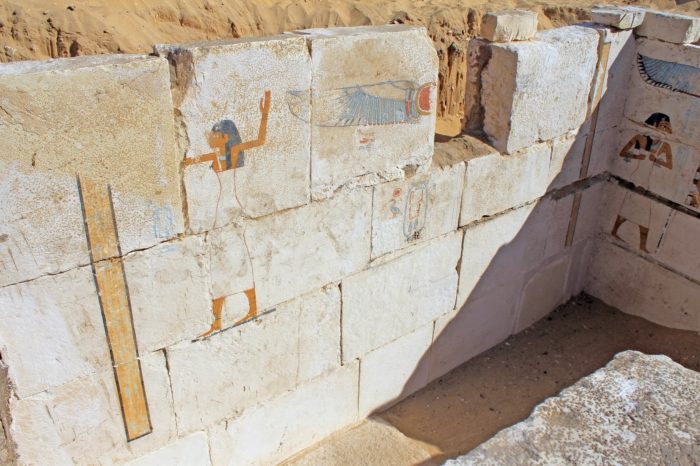Archaeologists have discovered the tomb of a previously unknown pharaoh at the southern Egyptian site of Abydos last week. His name is Woseribre Senebkay and he represents the first material proof of a forgotten Abydos Dynasty, ca. 1650–1600 BC.

The tomb of Senebkay consists of four chambers with a decorated limestone burial chamber. The burial chamber is painted with images of the goddesses Nut, Nephthys, Selket, and Isis flanking the king’s canopic shrine. Other texts name the sons of Horus and record the king’s titulary and identify him as the “king of Upper and Lower Egypt, Woseribre, the son of Re, Senebkay.

Senebkay’s tomb was badly plundered by ancient tomb robbers who had ripped apart the king’s mummy as well as stripped the pharaoh’s tomb equipment of its gilded surfaces. Nevertheless, the Penn Museum archaeologists recovered the remains of king Senebkay amidst debris of his fragmentary coffin, funerary mask, and canopic chest. Preliminary work on the king’s skeleton of Senebkay by Penn graduate students Paul Verhelst and Matthew Olson (of the Department of Near Eastern Languages and Civilizations) indicates he was a man of moderate height, ca. 1.75 m (5’10), and died in his mid to late 40s.

Discovery implications?
This is a highly significant discovery because it confirms that there was an independent ruling dynasty in Abydos contemporary with the dynasties ruling northern and southern Egypt. The northern 15th Dynasty rulers were Hyksos, invaders from what are today Syria, Lebanon and Israel. Down south in Thebes the 16th Dynasty was native Egyptian. Right around the time the Kingdom of Abydos ended, ca. 1600 B.C., the Thebans began a war to expel the occupiers in the north and re-unify Egypt. The war lasted 50 years. The Hyksos were defeated and the New Kingdom founded.

This Abydos Dynasty may have been a kind of buffer state between the two. They used the Anubis-Mountain area of South Abydos as a royal necropolis conveniently located next to the richer tombs of Middle Kingdom pharaohs like Sobekhotep I. There are approximately 16 tombs from the Abydos dynasty in the necropolis which range in date from 1650–1600 B.C., making Senebkay one of the first to be buried.
(Source)











